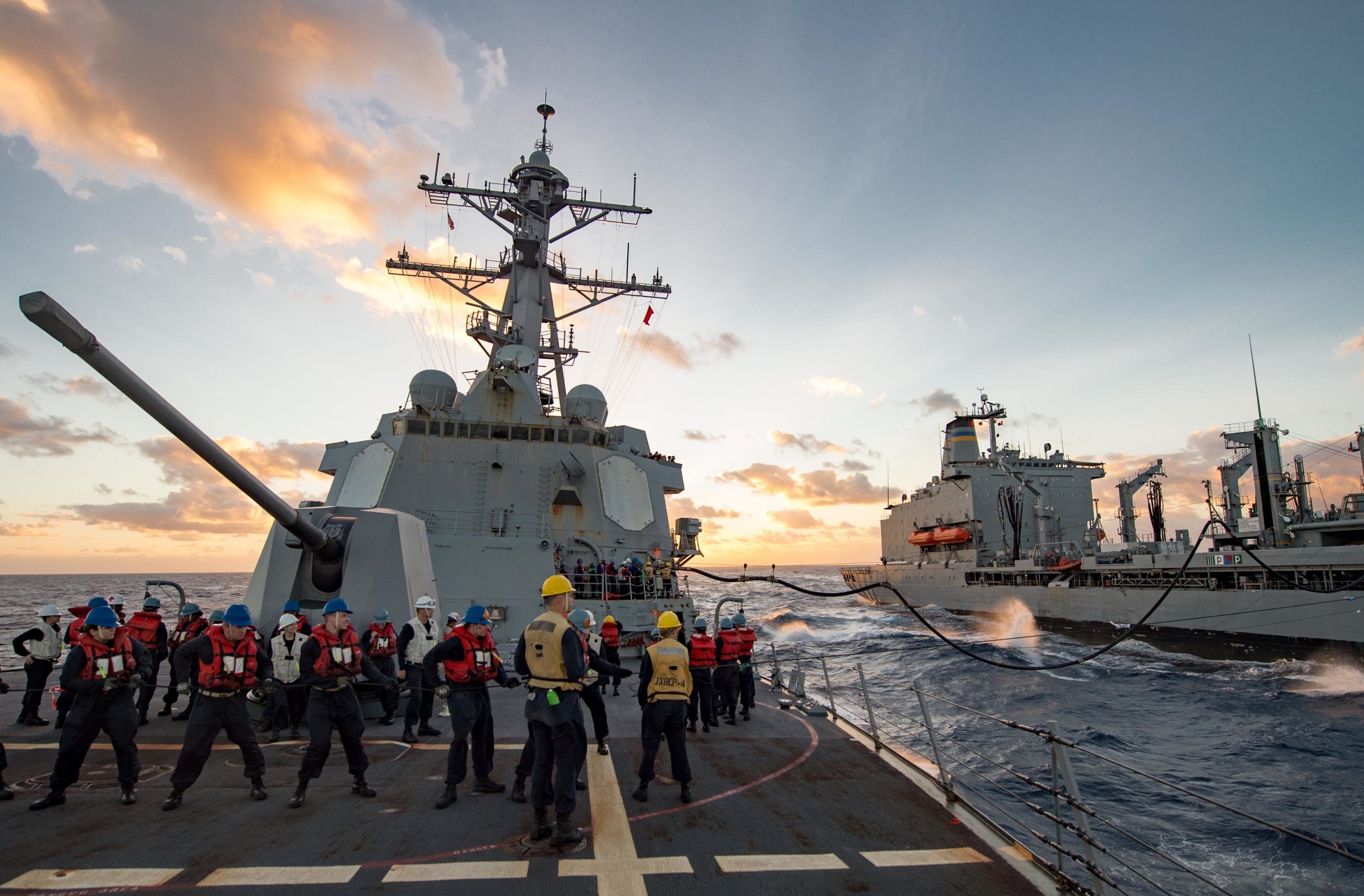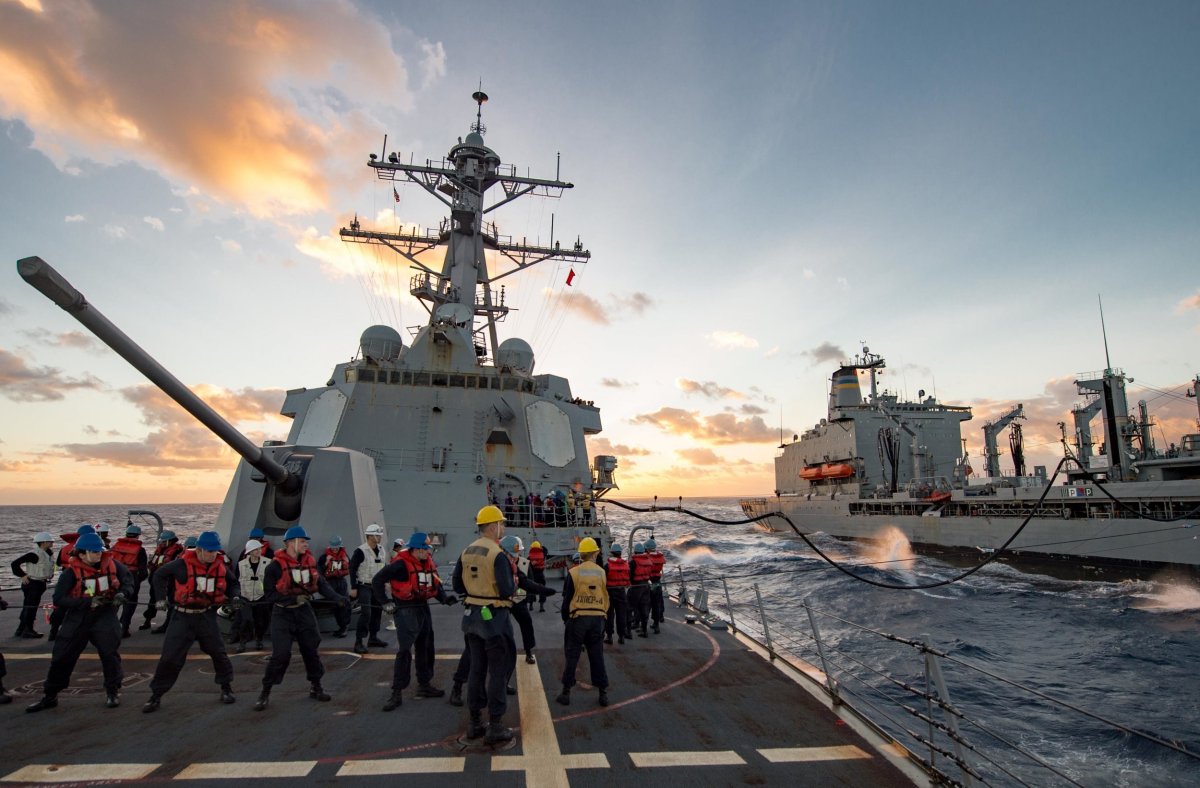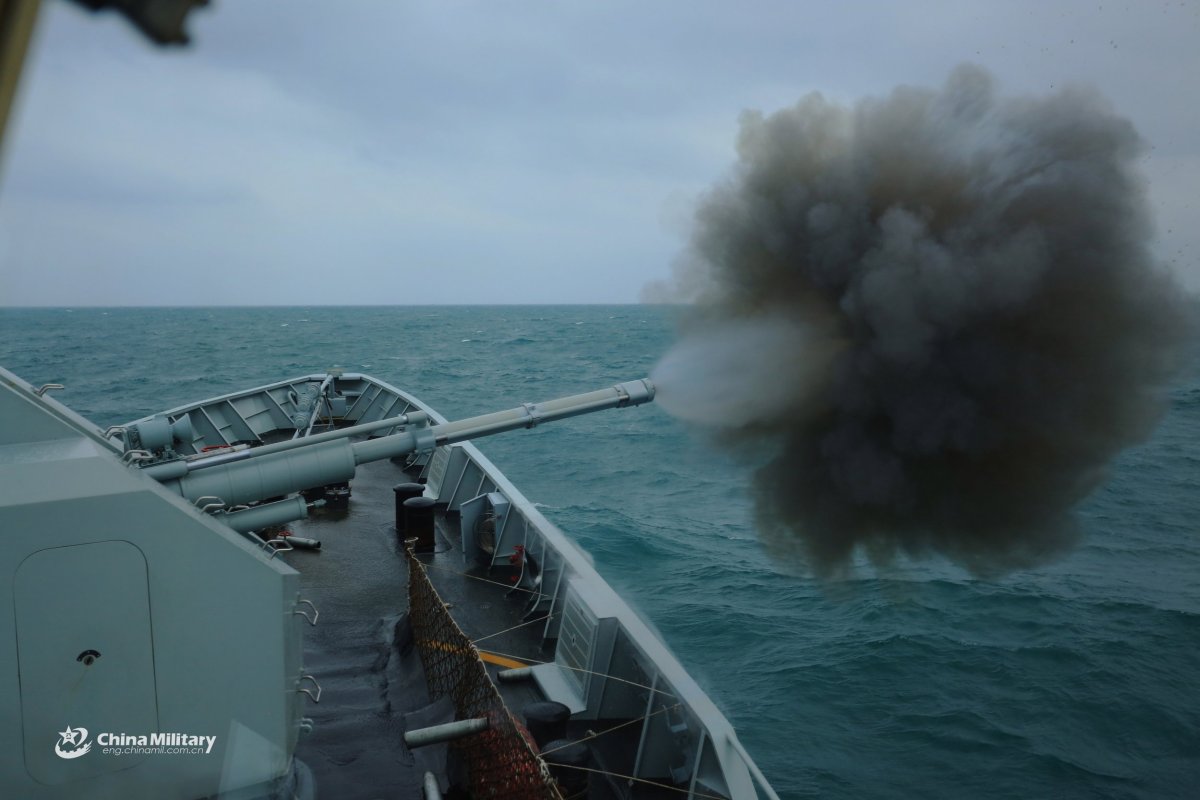
The U.S. military has sent a message to Russia by sailing through a disputed waterway near Japan. The move came only a week after China mobilized its own vessels in response to a perceived transgression by the Navy.
Navy Lieutenant Rachel McMarr, a spokesperson for the Pacific Fleet, told CNN Wednesday that Arleigh Burke-class guided-missile destroyer USS McCampbell "sailed in the vicinity of Peter the Great Bay to challenge Russia's excessive maritime claims and uphold the rights, freedoms, and lawful uses of the sea enjoyed by the United States and other Nations." The Navy considered the move one of its "freedom of navigation" operations, which are outlined in the 1982 United Nations Convention on the Law of the Sea that Moscow has ratified, but Washington has not.
Despite mentioning Russia in her comments, McMarr said that such operations were "not about any one country, nor are they about current events."
"These operations demonstrate the United States will fly, sail and operate wherever international law allows," she added. "That is true in the Sea of Japan, as in other places around the globe."

Washington does not recognize Moscow's territorial claims beyond 12 miles off the coastline of the Peter the Great Bay, a large gulf located in the Sea of Japan, which is known as the East Sea on the nearby Korean Peninsula. The bay is home to the Russian city of Vladivostok, where the Russian navy's own Pacific Fleet is headquartered.
Just as the U.S. disputes Russia's claims in northeast Asia, it also contests vast Chinese claims to the South China Sea, where Navy "freedom of navigation" operations have stirred serious tensions in recent years. China maintains overlapping claims with Brunei, Malaysia, Indonesia, the Philippines and Vietnam and does not recognize Taiwan—which has also attempted to carve out its own piece of the region—to be a sovereign state, instead viewing it as a breakaway province set to be reunited, by force if necessary.
Last week, the Ticonderoga-class guided-missile cruiser USS Chancellorsville, traveled near the contested Paracel Islands, one of several land formations in the South China Sea that Beijing has been accused of militarizing. Two days later, Arleigh Burke-class guided-missile destroyer USS Stockdale and Henry J. Kaiser-class underway replenishment oiler USNS Pecos sailed through the Taiwan Strait.
In response, Chinese Southern Theater Command spokesperson Colonel Li Huamin told reporters Saturday that the military had mobilized air and sea forces to warn the USS Chancellorsville to leave and Chinese forces reportedly stepped up their own patrols in the Taiwan Strait. That same day, Chinese Defense Ministry spokesperson Colonel Ren Guoqiang warned that "the Chinese military will remain on high alert and resolutely safeguard national sovereignty and territorial integrity."

Washington has increasingly viewed the rising military capabilities of China and Russia as a threat to its own interests abroad. The two leading U.S. rivals have increasingly collaborated in the face of what they view to be hostility from the world's only military superpower. The Pentagon maintains some 800 military installations around the world, including an estimated 279 in the Asia-Pacific region alone and has installed in the region advanced missile defenses condemned by Beijing and Moscow.
The same 1982 law that the Navy cites in its "freedom of navigation" operation has become a source of new international tensions in Eastern Europe, where Russia fired upon three Ukrainian vessels and detained them along with their crew after accusing them of pursuing reckless maneuvers in the contested Kerch Strait. The waterway is located between the Black Sea and Sea of Azov, near Crimea, which came under Moscow's control as part of a 2014 referendum that has received limited international recognition.
Uncommon Knowledge
Newsweek is committed to challenging conventional wisdom and finding connections in the search for common ground.
Newsweek is committed to challenging conventional wisdom and finding connections in the search for common ground.
About the writer
Based in his hometown of Staten Island, New York City, Tom O'Connor is an award-winning Senior Writer of Foreign Policy ... Read more
To read how Newsweek uses AI as a newsroom tool, Click here.








